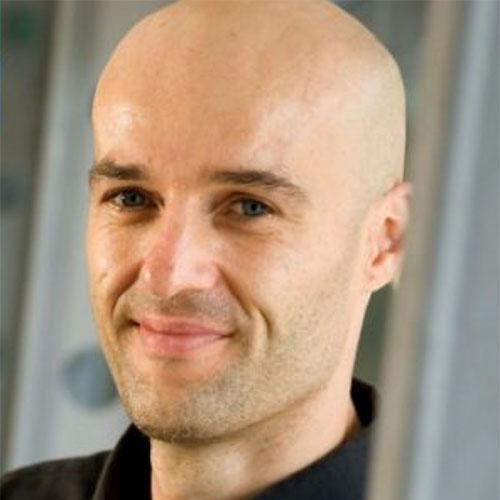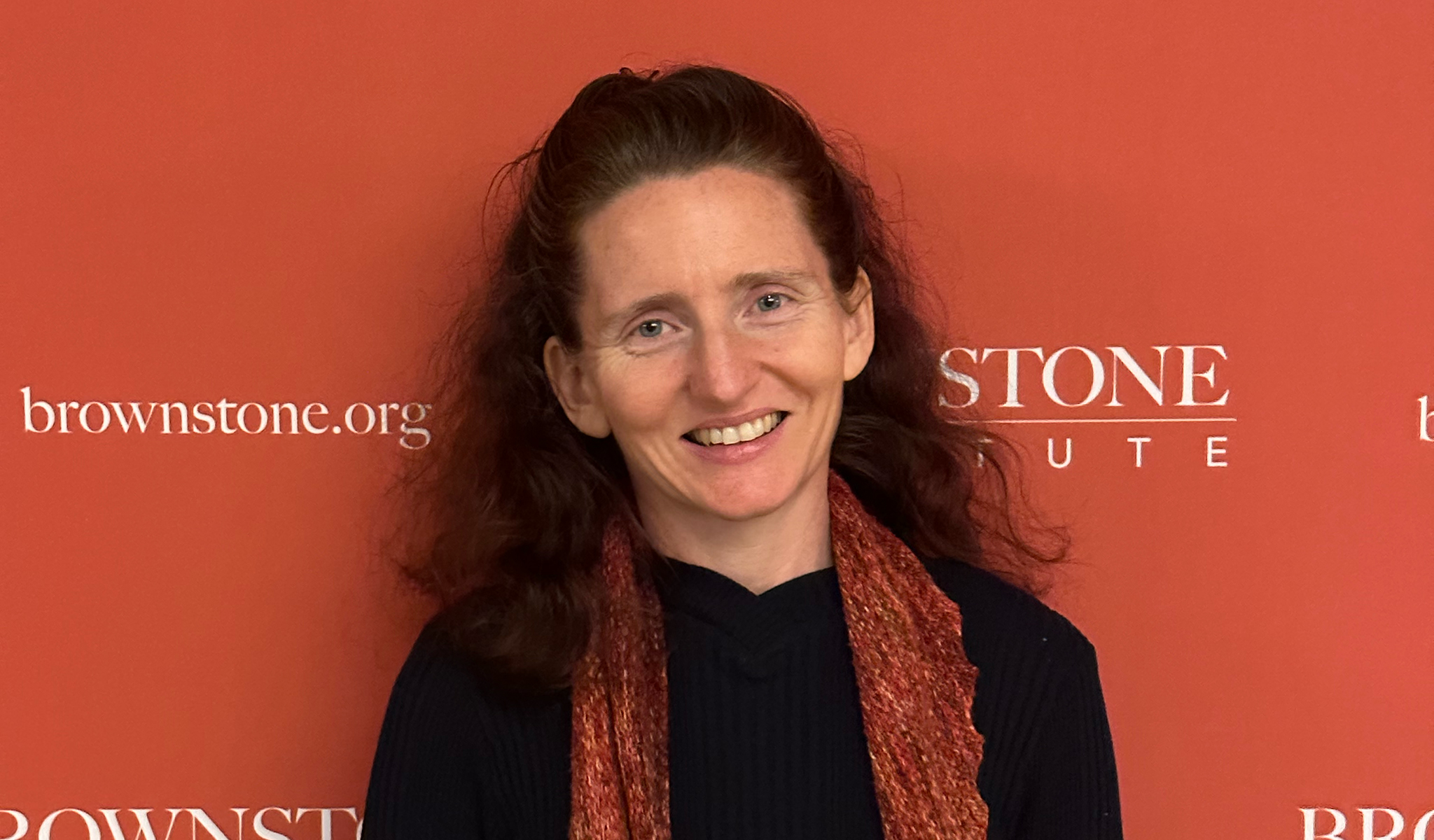Lockdowns are strong restrictions on the movements of people. The most extreme lockdown possible is where everyone is told they literally cannot move at all, a situation only sustainable for a few hours until people start to die of thirst and need to go to the toilet. A mild lockdown is where humans are prevented from moving from one continent to another. The lockdowns of 2020-2021 were invariably in between these two extremes and differed by country.
In this book we use the word lockdown generically to mean strong restrictions on the movements of people, and in particular on their ability to engage in normal activities (like entering shops or restaurants, or attending school) and to physically touch family and friends who live in different households.
When we look at data on lockdowns in different countries and over time, we use a particular measure of restrictions on movement, the Oxford Blavatnik Stringency Index, that gives a daily severity level of restrictions for each country in the world since January 1st 2020. This stringency index combines information on nine government policies: school closures, workplace closures, cancellation of public events, restrictions on gatherings, closure of public transport, restrictions on internal travel, restrictions on foreign travel, and the presence of a Covid-cautioning public information campaign.
The lowest value is 0 and the highest 100. We define a lockdown as what is indicated by a score above 70, corresponding to quite strong government limitations on the movement and social life of individuals. By this definition, from January 1st 2020 to August 1st 2021, the average world citizen spent about eight months in lockdown.
To evaluate lockdowns from a sociological and medical perspective, it is handy to start with a quick history of the basic coevolution of social life and viruses. From this will emerge the reasons for the social system being as it was in early 2020, and the resulting hard limits to restricting normal human activities.
For much of history, humans lived in fairly small groups of 20-100 people that interacted with other groups only infrequently, something we nowadays would call ‘extreme social distancing’. It was an environment in which viruses targeting humans were in perpetual risk of dying out. If a virus emerges in a small hunter-gatherer population of 50 people and only gets a chance every few years to jump to other groups, then it would have to be able to survive in a host body for a very long time waiting for its opportunity.
Normally, the virus either kills off the whole original group, or dies out as the humans within the group fight back, recover and neutralise it internally.
It is also possible for a virus to be incompletely neutralised by its hosts. The virus can keep circulating in a small group even if those originally infected clear the first infection. The virus could return, perhaps due to decaying efficacy of the antibodies. Herpes, responsible for cold sores, is like this. Still, few viruses can survive dormant in the human body. Instead they need to circulate by jumping from person to person in a never-ending cycle.
The only interaction between different human groups that was truly unavoidable in prehistoric times was the exchange of wives and husbands every few years in order to refresh the gene pools. That does not give a virus much to work with.
The inevitability of infrequent mingling between groups throughout human history gave rise to two species of parasites that are much like viruses in how they spread and how they survive: head lice and pubic hair lice. These creatures, of which probably more than just a single variety of each exists, evolved with us, although it’s not clear that they were ever much more than an annoyance.
Afforded few opportunities to spread beyond a small group of hosts, lice evolved to capitalise upon a transmission route available in the one dimension of life where extra-familial social closeness was impossible to avoid: non-incestuous sex.
The viruses we regularly encountered in the hunter-gatherer period were those in the soil, in plants and in animals with which we interacted. The extreme social distancing of the hunter-gatherer period did not prevent humans from getting infected now and then by harmful viruses circulating in birds and other animals. But any virus ‘lucky enough’ to make it into a human and self-replicate inside that person had very little chance of jumping to other groups. They would have died out waiting for new hosts. There are likely to have been millions of unnamed viruses that humans contracted over the thousands of years of history that simply never spread beyond a small group of self-isolating people.
This situation changed dramatically when humans started to live in larger groups, when they started to live close to other animals, and particularly after cities arose around 10,000 years ago. Commerce among villages brought more frequent contact between groups. The domestication of animals brought a greater possibility that humans would contract their diseases, a process known as ‘zoonotic’ transmission.
Cities brought not only much more commerce but also the dense packing of many humans together, which made it easier for a virus to jump from host to host. Trade, conquest and colonisation mixed humanity even more and made circulation of viruses and bacteria even easier. In the last ten thousand years it was inevitable that humans acquired many viruses that have simply never decamped.
Lockdowns — sometimes referred to as ‘stay-at-home’ or ‘shelter-in-place’ (‘SIP’) orders — come in a variety of flavours. The main idea of any lockdown is simple: if you can get people far enough apart from each other and force them to stay apart, they cannot infect each other. Whoever is already infected at the moment of halting all movement gets better or dies without infecting others.
There is an intuitive logic to this, and locking down whole cities has seemed sometimes to work in past outbreaks of new diseases to prevent their spread to other cities. A famous example is the lockdown of whole neighbourhoods in Hong Kong during the SARS epidemic of 2003, when no one was allowed to travel out of their own small community.
The lockdown response to Covid was essentially the same idea.
From a social perspective, lockdowns are like trying to get humans to act out a reprise of the hunter-gatherer period, isolated in small groups and interacting infrequently. The failures of lockdowns are all related to the impossibility of really trying to live that way again.
There were three fundamental problems with the Covid lockdowns in early 2020, two of which were widely realized before they happened, with the third coming as something of a surprise.
The first fundamental problem is that if a new virus is extremely widespread in the human population then there is no realistic chance of preventing it returning to a region in the future, unless that region fences itself off from the rest of humanity forever or acquires a 100% effective vaccine.
In early 2020 the experience with vaccines was that they took at least five years to develop and were rather ineffective in the case of coronaviruses anyway, so they seemed like a long shot. Therefore, at best lockdowns meant spreading waves of infections more over time, which is exactly what health authorities around the world said they were trying to accomplish in the first few months of the Great Fear.
This made the lockdowns somewhat illogical to begin with: why spread an event over time at great cost?
The argument at the time was that smoothing a wave of infections meant hospital critical care facilities would not be ‘overwhelmed’ by the demand at any one time, and that hospitals could then process a larger caseload in total. However, it wasn’t clear that hospitals were offering a superior treatment than could be offered at home or by community nurses, so the justification for a lockdown was perched precariously on the unarticulated blind belief that hospital treatment was useful.
Actually, it became clear over time that some of the treatments applied in intensive care (IC) units, such as ventilators that artificially push air into the lungs, were possibly harmful. Researchers in Wuhan, for example, reported that 30 out of 37 critically ill Covid patients who were put on mechanical ventilators perished within a month. In a U.S. study of patients in Seattle, only one of the seven patients older than 70 who were connected to a ventilator survived. Just 36% of those younger than 70 came out alive. The supposed benefits of hospital or IC treatments were simply oversold.
The second fundamental problem is the damage to social life, economic activity, and population health that results from locking people down. Reducing exercise and social interaction ran counter to the general public health advice of decades. It was generally known in government and public health circles that lockdowns would be extremely costly in many ways. That is the main reason guidelines for intervention against pandemics that Western governments had available in early 2020 did not include blanket lockdowns, although they advocated some very targeted social distancing measures in extreme circumstances.
The third problem was that the envisioned curbs on interaction were neither possible nor relevant to the spread and lethality of the disease. To see this, consider what governments were not able to do.
Think first of the limits to restricting the movements of healthy people. Governments liked to say that they were preventing people from mixing, but by forcing them into their homes they actually compelled them to mix more at home. After all, people live with others and often in large buildings with many others sharing the same air.
Also, people needed to eat. Essential services like water and electricity needed to keep operating. People also had to go to shops, which required constant delivery and restocking just as before the outbreak. Many ‘essential workers’, including the police, health workers, and power plant engineers were still buzzing around as before.
While many healthy people no longer moved much out of their homes, others started travelling a lot more because they were delivering parcels or needed to work at the local shops. Large shops such as supermarkets were exactly the kind of indoor places where vulnerable people mix with others.
Think of all those shop workers spending the whole day in the worst environment possible — indoors with many vulnerable people — and then returning home to infect others. Think also of cleaners and repairmen visiting their customers and thereby becoming potential super-spreaders. One could ban cleaners from going to houses, but one couldn’t ban people like plumbers and electricians doing their rounds to ensure water and electricity was still working in homes. The highly integrated nature of modern economies made it impossible for people to live like hunter-gatherers.
Then think of the unhealthy people. Lockdowns essentially targeted the wrong people; namely, the healthy working population that hardly got sick from Covid and thus were also a small part of the story of infections. Those who were the likeliest both to get sick and to spread it to others were old people.
They had pressing reasons to be in all the wrong places. Other illnesses forced them to get help in hospitals or at doctors’ offices, or within their nursing homes. All three of these places in most Western countries are almost designed to be Covid distribution centres. They are large, indoors and mix together the easily-infected with the already-infected who are shedding masses of the virus. Moreover, having been shut inside their homes with little exercise and social interaction to improve their immune systems, the elderly became much more vulnerable over time because their health deteriorated.
Reducing the movements of healthy people was not going to move the needle in terms of stifling virus transmission among the truly vulnerable elements of the population. Worse, the logic of trying to keep movement limited meant there was almost no escape for governments from doing the wrong thing: once they and their health advisors had convinced the population that normal interactions were a serious risk, every move to ‘open up’ was seen as potential endangerment that could be exploited by political opponents.
There was also no escaping the imperative of having a lot of movement around the most vulnerable people because they had other health problems that would kill them if not attended to, and no realistic alternative places to house and help them other than large indoor places with many others.
Authorities did gradually become aware of this problem, but their reactions often made things worse. For example, it might sound logical to keep patients in hospital with Covid until they are fully healed so as not to send them back to nursing homes where they would infect hundreds of others. This mistake was made right at the start in many countries. Doing this in fact kept them longer in a hospital with many other patients and no realistic way to prevent them from sharing the same air.
Also, it meant hospital beds were occupied that could have been allocated to patients with non-Covid-related illnesses, making more people vulnerable and leading to avoidable deaths from other health problems. Similar unintended consequences of actions often taken for understandable reasons abounded.
One must stress that there is no ‘easy optimal solution’ for these kinds of problems. For the individual hospital manager there is often no realistic place to send patients other than back from whence they came, in this case the nursing home. Only via more radical choices, such as putting Covid patients in empty hotels with limited nursing staff around them could one avoid the two problems above, but that would then open the authorities to accusations of negligence. Only when there is much more tolerance for reasonable judgments without fear of blame can one avoid the trap that ‘being seen to do the right thing’ leads to the wrong thing being done.
The problem of infected animals is another instructive story of failure. During 2020 it became clear that bats, minks, dogs, tigers, ferrets, rats and many other animals with which humans regularly interact could also carry the virus. The fact that minks were able to infect humans was already documented, but it’s likely that many other ferret-type animals can infect humans too. Wiping out all infected animals or vaccinating them is impossible: the history of trying to wipe out small, fast-breeding animals like minks and bats is a litany of failures.
This did not stop governments from trying. In July 2020, the government of Spain ordered the culling of more than 90,000 mink at a farm in the north-eastern province of Aragόn after it was discovered that 87% of them carried the virus. A mutated form of the virus then showed up in Danish mink three months later, leading the government there to order the country’s entire population of mink to be culled. About 17 million of these animals were summarily placed on mink death row, waiting to be gassed with carbon monoxide. A wave of opposition to the moral and legal status of the government’s extermination order gave the minks a temporary stay, but unfortunately from the minks’ standpoint not for long, and they were duly executed.
Mink are farmed in Sweden, Finland, the Netherlands, Poland and the United States, and they are also found in the wild — nocturnal, shy, and living in little holes and crevices near water. Creatures like this in their millions, burrowed into holes and hiding in caves all around the world, simply cannot be eliminated. Nor can we vaccinate them. We thus cannot eliminate Covid either, not even if every human on the planet gets a perfect vaccine.
Animals aside, governments weren’t able to lock everything down as they had hoped because the necessities of life ensured that a lot of mixing continued, particularly by the wrong groups. Even well-intentioned governments had pretty much no chance of ‘controlling’ either the spread or the lethality of Covid once it became endemic in March 2020, but they could make matters worse with lockdowns that forced their populations to become poorer, unhealthier, and more vulnerable to Covid itself. Lockdowns were a gigantic failure even on their own terms, as we will discuss later.
The smart thing to do would have been to encourage experimentation with different strategies around the world and even within regions of individual countries. More experiments would mean more to be learned from both the successes and the failures. Incredibly, governments and health scientists frequently did the opposite, which was to disparage the policies of others rather than encourage them and pay attention to the outcomes.
Think of some of the experiments that could have been tried in a more cooperative environment. As one example, suppose a regional government accepts the inevitability of a large wave of infections. It staffs the part of its health system in contact with the most vulnerable elderly with workers from other countries who had already recovered from the virus and were therefore probably immune.
Such a region could also try to achieve immunity in its own healthy population by openly encouraging healthy volunteers below age 60 to live normal lives, in the full knowledge that doing so brought a higher risk of infection. Once recovered, the now immune healthy people then could take over the care of the elderly and provide a larger pool of immune workers to share with other regions. You might call such a two-pronged experiment ‘targeted protection and exposure’. It capitalises on the general idea of herd immunity, which is that if some fraction (like 80%) of a population acquires immunity to a disease then small waves of infections die out because the virus is not transmitted widely enough to survive, protecting the 20% who are not immune.
Many other experiments could have been tried in different regions and their outcomes shared. In the place of such cooperative experimentation was adversarial competition, with countries trying different things while constantly criticizing all others who made alternative choices.
Even when it was obvious that some success had been achieved with different approaches in other countries, the typical response of health experts in the West was to say, in effect, “They have different circumstances and what they are doing will not work here.” This just made it harder to learn from each other in a calm, objective manner.
Adapted from The Great Covid Panic (Brownstone, 2021)
Published under a Creative Commons Attribution 4.0 International License
For reprints, please set the canonical link back to the original Brownstone Institute Article and Author.











